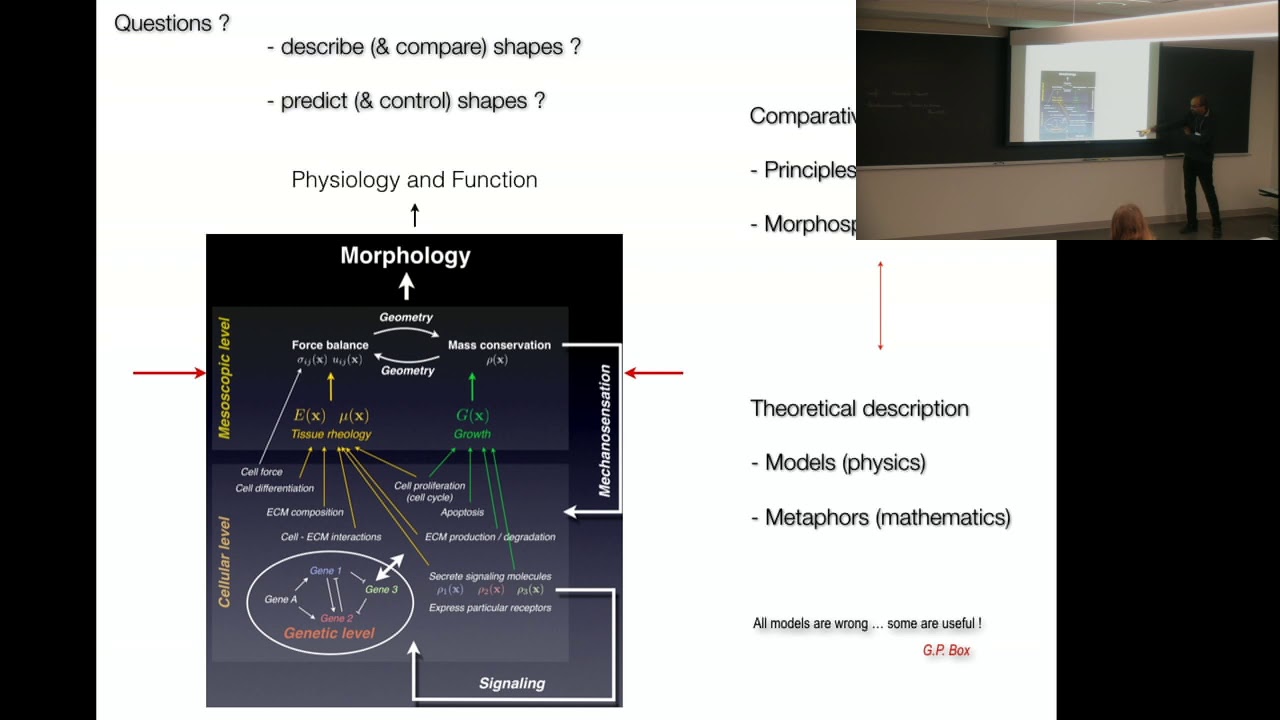
In Fall 2018, the CMSA will host a Program on Mathematical Biology, which aims to describe recent mathematical advances in using geometry and statistics in a biological context, while also considering a range of physical theories that can predict biological shape at scales ranging from macromolecular assemblies to whole organ systems.
The videos of the talks are contained in the youtube playlist below.
The plethora of natural shapes that surround us at every scale is both bewildering and astounding – from the electron micrograph of a polyhedral virus, to the branching pattern of a gnarled tree to the convolutions in the brain. Even at the human scale, the shapes seen in a garden at the scale of a pollen grain, a seed, a sapling, a root, a flower or leaf are so numerous that “it is enough to drive the sanest man mad,” wrote Darwin. Can we classify these shapes and understand their origins quantitatively?
In biology, there is growing interest in and ability to quantify growth and form in the context of the size and shape of bacteria and other protists, to understand how polymeric assemblies grow and shrink (in the cytoskeleton), and how cells divide, change size and shape, and move to organize tissues, change their topology and geometry, and link multiple scales and connect biochemical to mechanical aspects of these problems, all in a self-regulated setting.
To understand these questions, we need to describe shape (biomathematics), predict shape (biophysics), and design shape (bioengineering).
For example, in mathematics there are some beautiful links to Nash’s embedding theorem, connections to quasi-conformal geometry, Ricci flows and geometric PDE, to Gromov’s h principle, to geometrical singularities and singular geometries, discrete and computational differential geometry, to stochastic geometry and shape characterization (a la Grenander, Mumford etc.). A nice question here is to use the large datasets (in 4D) and analyze them using ideas from statistical geometry (a la Taylor, Adler) to look for similarities and differences across species during development, and across evolution.
In physics, there are questions of generalizing classical theories to include activity, break the usual Galilean invariance, as well as isotropy, frame indifference, homogeneity, and create both agent (cell)-based and continuum theories for ordered, active machines, linking statistical to continuum mechanics, and understanding the instabilities and patterns that arise. Active generalizations of liquid crystals, polar materials, polymers etc. are only just beginning to be explored and there are some nice physical analogs of biological growth/form that are yet to be studied.
The CMSA hosted a Workshop on Morphometrics, Morphogenesis and Mathematics from October 22-24.
